Country Eggs Taste Better
There are at least one hundred ways to cook eggs. I am going to give you ten.
Country eggs taste better.
They do.
In the country, most places I have been, fresh from the chicken on the farm eggs cost $2.00-$4.00 per dozen. At the Farmer’s Market, they’ll cost you anywhere from $6.00-$12.00 a dozen.
If you can get to the country, buy them there.
The most fun place to buy them in the country is directly from the farmer. He’ll have a hand-painted, hand-made sign that says “Eggs $xx”.
He’ll want cash.
Country eggs have a bright yellow-yellow yolk and generally will be bigger than the extra large, corporate farmed ones you buy at the grocery store.
The taste is also out of this world.
You can become an egg snob.
Really.
And guess what?
They don’t have to be refrigerated, but do so to keep them longer.
You can determine if your eggs are fresh by putting them in a bowl of cool water. The questionable ones will float to the top, the fresh ones will sit on the bottom of the bowl.
Characteristics:
🐔Country eggs don’t crack easily.
🐔Their shells are much thicker.
🐔When you hard boil them, peeling off the shell is a bit of a task as it is firmly attached to the inside membrane of the egg. But there is a good method that works, keep reading.
🐔They come in varied colors and they aren’t uniformly colored.
🐔They come in different sizes too.
🐔The Yolks are almost always richer/darker/deep yellow
For years, eggs had been unfairly stigmatized due to their cholesterol content, however that thinking has evolved, country egg eating folk have been right all along:
Research now shows that the dietary cholesterol intake from foods like eggs has a negligible effect on blood cholesterol levels for most individuals.
Remember, there are different types of cholesterol. Eggs can often help to increase the good type (HDL), which is beneficial for your health.
Science shows there is no significant association between egg intake and a higher risk of heart disease.
AI generated:
Eggs are highly nutritious, providing about 77 calories, 6 grams of protein, and 5 grams of fat per large egg. They are rich in essential vitamins and minerals, including vitamin B12, choline, and selenium, making them a valuable part of a balanced diet.
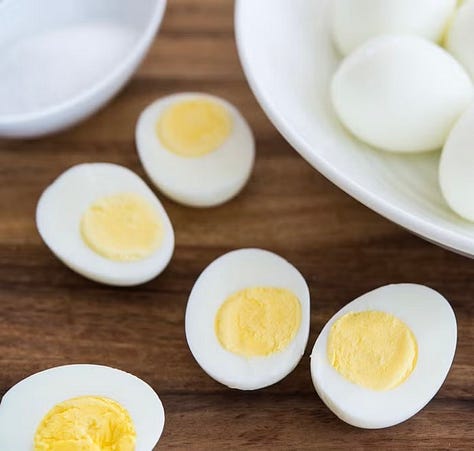
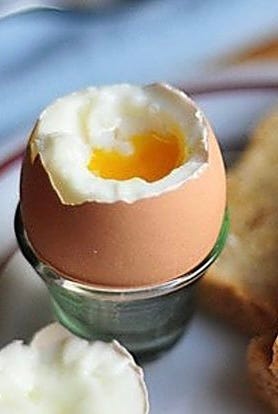
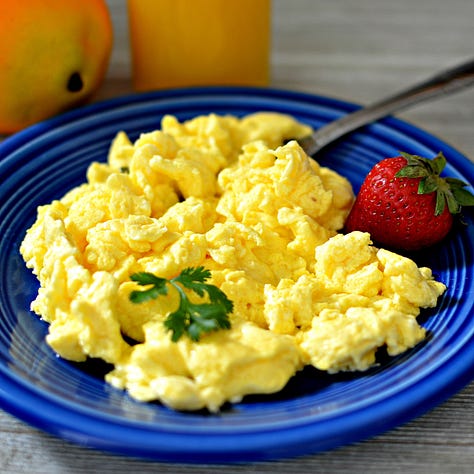
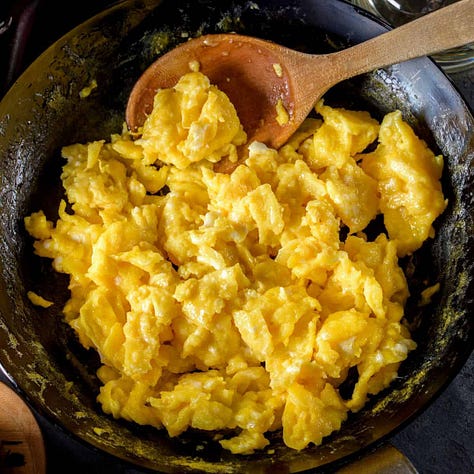
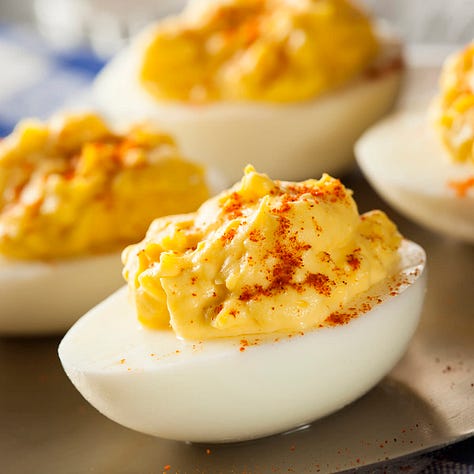

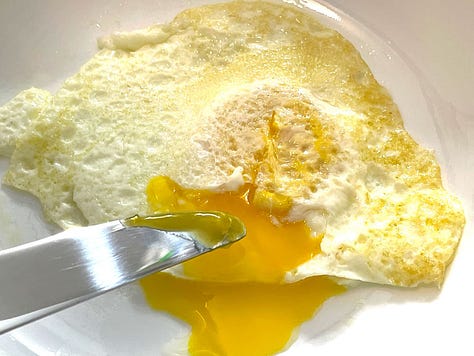
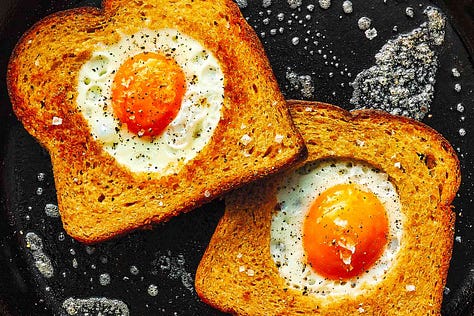
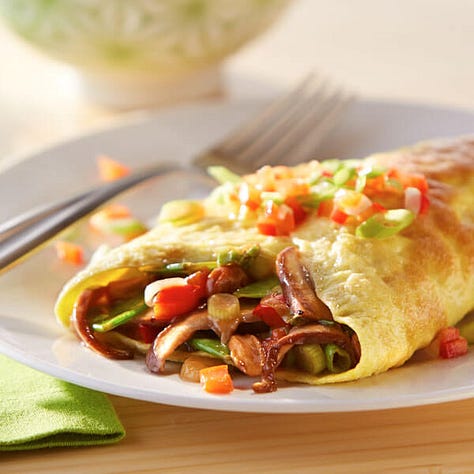
There are at least one hundred ways to cook eggs. I am going to give you ten:
1. Hard-boiled
Bring a medium saucepan of water to a boil, then gently lower the eggs into the water. I use a wire basket for this. Now that the eggs are in, lower the heat so that the water is at a gentle simmer. You don’t want a full rolling boil, just a gentle amount of bubbles. Cook for 13 minutes. When the eggs are finished cooking, drop them into an ice bath for 5 minutes. I only like to break out the ice bath when it’s absolutely essential, like when blanching vegetables, but I’ve learned that this is one of those essential situations. Don't skip it. After 5 minutes, the eggs will be cool to the touch. Give them several taps against the countertop, all over. Then, peel away. You’ll get lovely large pieces of shell that come right off. Guaranteed. (Note: if you are using just layed country eggs, let them “age” for a week or so before hard- boiling. Search on “aging farm fresh eggs for boiling” to understand this phenomenon)
2. Soft-Boiled
Start with cold eggs. Bring a saucepan (large enough to hold the eggs in a single layer) of water to a boil over medium-high heat. Using a slotted spoon, gently lower the cold eggs into the water one at a time. Cook for exactly 6½ minutes, adjusting the heat as necessary to maintain a gentle boil. Meanwhile, fill a bowl with cold water and some ice cubes. When the eggs are done cooking, transfer them to the water and chill until just slightly warm, about 2 minutes. To eat, place the soft-boiled egg with the smaller end up in an egg cup Gently crack the shell until you can peel away some of the shell allowing you to scoop out the insides with a spoon or dip toast into the runny egg. If you don’t have egg cups but would like to serve the soft-boiled eggs this way, you can also use shot glasses. Alternatively, the eggs can be peeled and sliced in half.
3. Scrambled
Crack 1-2 whole eggs per person, removing the shells, allowing the runny eggs to pour into a bowl, glass-measuring cup or, coffee mug. Add 1- tablespoon milk, half and half or cream per egg. Use a whisk or a fork to whip the eggs together. The more whipping you do the lighter your scrambled eggs will be. Heat a frying pan and add a little butter, lard or olive oil. Pour your whipped eggs into the heated pan. Count slowly to ten. Stir the eggs. Count slowly to ten. Stir the eggs. Do this until they are the texture you like. Scoop them out of the pan onto plates. Add Salt and pepper to taste. Some people like hot sauce on their scrambled eggs.
4. Cheesy Eggs
Crack 1-2 whole eggs per person, removing the shells, allowing the runny eggs to pour into a bowl, glass-measuring cup or, coffee mug. Add 1- tablespoon milk, half and half or cream per egg. Use a whisk or a fork to whip the eggs together. The more whipping you do the lighter your eggs will be. Stir in a hand full of grated cheddar cheese, Monterey Jack, Pepper Jack or Swiss cheese. (If you add too much cheese, you’ll have mess, so experiment with smaller quantities of cheese!). Heat a frying pan and add a little butter, lard or olive oil. Pour your whipped eggs into the heated pan. Count slowly to ten. Stir the eggs. Count slowly to ten. Stir the eggs. Repeat these two steps until the eggs are the texture you like them. Scoop them out of the pan onto plates. Add Salt and pepper to taste.
5. Deviled Eggs
Make 12 hard-boiled eggs. Peel the shells off of them and cut them in half lengthwise. Scoop the yolks out of the white part into a bowl and place the whites on a plate. With a fork, mash the yolks into a paste. Add 2-tablespoons of mayonnaise or olive oil. Add 1-tablespoon lemon juice or vinegar. Sprinkle salt and pepper. Stir everything together. Spoon some of the mixture back into the egg whites. Sprinkle with paprika or black pepper. Make them fancy by placing a little bit of pickle, parsley or a caper on top.
6. Fried Eggs – Sunny Side Up
Heat a little butter, lard or olive oil in a skillet. When the oil is hot crack the egg directly into the heated oil. You’ll see the whites really spread out, use a spatula to organize the whites around the yolk, doing this until they start to set up. You are trying to keep the yolk in the center. Cook until the white is solid and the yolk is the texture you like. Sunny side up usually means the yolk will be runny, but you can cook them until they hardened too.
7. Fried Eggs – Easy Over
Heat a little butter, lard or olive oil in a skillet. When the oil is hot crack the egg directly into the heated oil. You’ll see the whites really spread out, use a spatula to organize the whites around the yolk, doing this until they start to set up. You are trying to keep the yolk in the center. Cook until the white is solid. Once it is solid, use a spatula to flip the egg over to the other side and cook until the yolk is the texture you like. Easy over usually means the yolk will be sort of runny, but you can cook them until they are hardened too.
8. Egg in a Nest
Take as many slices of bread as there are people to serve and using a glass like a cookie cutter, cut a hole in the center of the bread. Keep the circle you cut out. Butter one side of the bread and the circle of bread. Heat a little butter, lard or olive oil in a skillet. Place the slice of bread, buttered side up in the heated oil and crack the egg directly into the hole in the bread. Once the egg white looks white and firm, place the bread circle on top of the egg buttered side up. With a spatula, flip the whole thing over pressing the bread onto the circle. When the yolk is the texture you like, (runny yolks are the best in my opinion), scoop the whole egg-in-the-nest onto a plate. Repeat for each slice of bread.
9. Omelet
Place your filler ingredients in a bowl. Fillers that are great to use: grated Swiss cheese & ham bits, Pepper Jack cheese & avocado, grated cheddar cheese & crumbled fried bacon. Make your omelet egg wrap: Crack 1-2 whole eggs per person, removing the shells, into a bowl, glass-measuring cup or, coffee mug. Add 1- tablespoon milk, half and half or cream per egg. Use a whisk or a fork to whip the eggs together. The more whipping you do the lighter your eggs will be.
Heat a frying pan and add a little butter, lard or olive oil. Pour your whipped eggs into the heated pan keeping them in a circle shape but pushing them to the center a little to keep them from sticking to the side of the pan so you can get a spatula under it to fold in half later. When the egg wrap is mostly solid, add your fillers just down the center of the circle. Using a spatula fold one side over your fillers, then fold the other side over. If you are using cheese, wait until the cheese is melted and sticking the whole thing together. Scoop the omelet onto a plate.




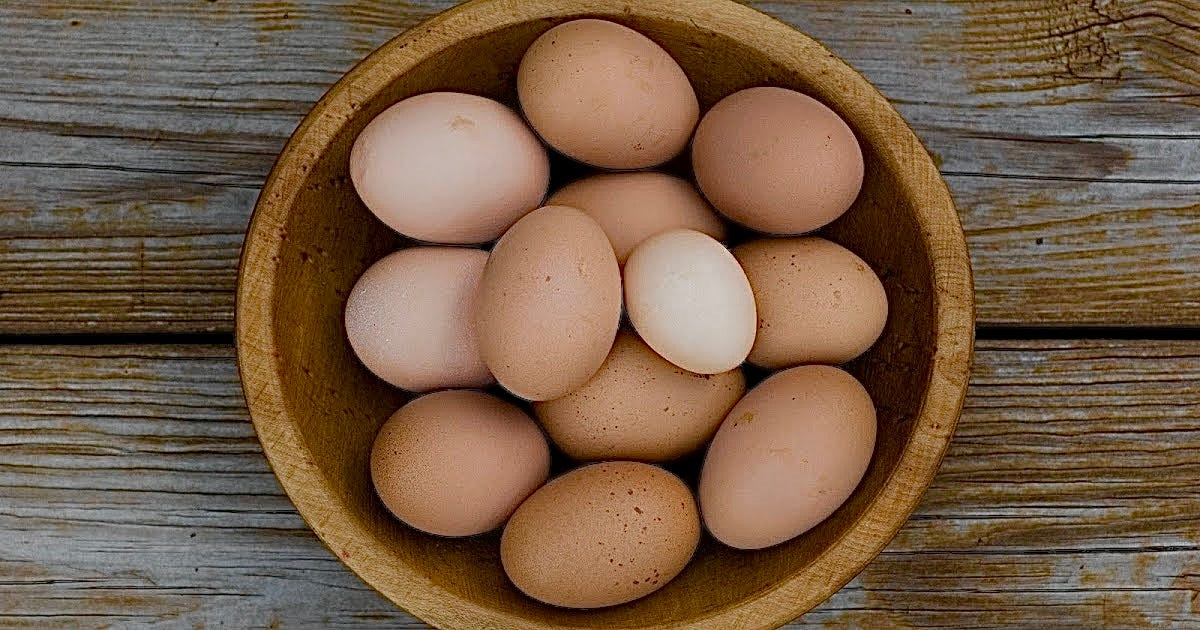
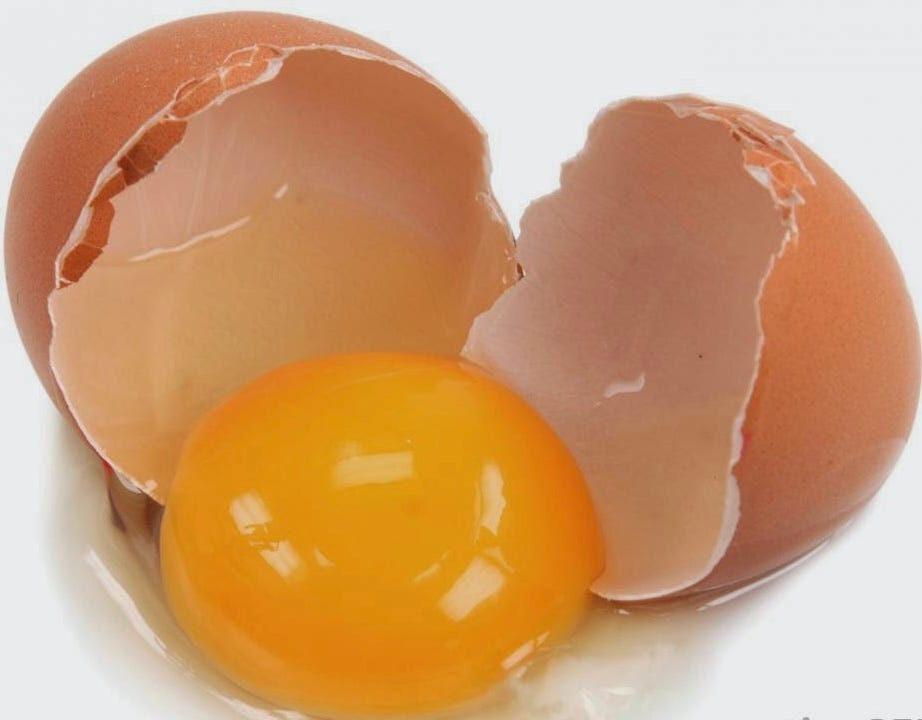

Eggs are amazing and a complete nutritional bomb. When we were in a chicken share with a neighbor we'd feed them dried red peppers, the classic SW type. Their yolks would turn a super dark orange.
I never new about testing for freshness with a bowl of water. Thanks!